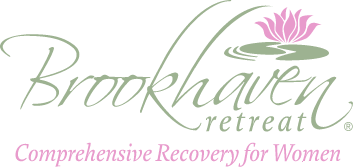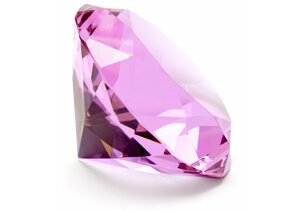What is vitamin E and what does it do?
Vitamin E is a fat-soluble vitamin essential to the human body. “Vitamin E” is actually a blanket term that includes eight different forms of the nutrient. The most studied is the alpha-tocopherol form, which seems to be the most utilized and beneficial form for the body, although scientists are curious about the health benefits of the other forms as well.
Vitamin E’s main function in the body is cellular function and protection. Vitamin E functions as an antioxidant, protecting cells from free radical damage. Free radicals are unstable molecules produced in the body when we metabolize food into energy. Free radicals can also come from environmental sources, such as cigarette smoke, air pollution, and ultraviolet light from the sun. Because free radicals have an unstable amount of electrons, they bounce around the body wreaking havoc on the body’s cells in their attempt to become stable. In doing so they damage the cell’s DNA and fat-based membranes, which can lead to mutation, cancer cell growth, arterial damage and even aging. Antioxidants are the wonderful rescuer that come in and neutralize them. In fact, the aging process in chocked up the free radical damage, so consuming foods rich in antioxidants like vitamin E, C, A, and others, can help slow the aging process and improve skin health.
The body also needs vitamin E to boost its immune system so that it can fight off invading bacteria and viruses. It helps to widen blood vessels and keep blood from clotting within them. In addition, cells use vitamin E to interact with each other and to carry out many important functions.
How much vitamin E do I need?
The amount of vitamin E you need each day depends on your age. Average daily recommended intakes are listed below in milligrams (mg) and in International Units (IU). Package labels list the amount of vitamin E in foods and dietary supplements in IU.
| Life Stage | Recommended Amount |
|---|---|
| Birth to 6 months | 4 mg (6 IU) |
| Infants 7–12 months | 5 mg (7.5 IU) |
| Children 1–3 years | 6 mg (9 IU) |
| Children 4–8 years | 7 mg (10.4 IU) |
| Children 9–13 years | 11 mg (16.4 IU) |
| Teens 14–18 years | 15 mg (22.4 IU) |
| Adults | 15 mg (22.4 IU) |
| Pregnant teens and women | 15 mg (22.4 IU) |
| Breastfeeding teens and women | 19 mg (28.4 IU) |
Food Sources of Vitamin E
Five of the best food sources of vitamin E are leafy greens. Spinach, chard, turnip greens, beet greens and mustard greens are all excellent sources.
Since vitamin E is fat-soluble, foods rich in essential fatty acids like nuts and seeds and plant oils, are good sources as well: sunflower seeds, almonds, peanuts, avocado, olive oil.
Below is The World’s Healthiest Foods list of vitamin E rich foods:
|
World's Healthiest Foods ranked as quality sources of vitamin E |
||||||
|---|---|---|---|---|---|---|
|
Food |
Serving Size |
Cals |
Amount (mg (ATE)) |
DRI/DV (%) |
Nutrient Density |
World's Healthiest Foods Rating |
|
Sunflower Seeds |
0.25 cup |
204.4 |
12.31 |
82.07 |
7.2 |
excellent |
|
Spinach |
1 cup |
41.4 |
3.74 |
24.93 |
10.8 |
excellent |
|
Swiss Chard |
1 cup |
35.0 |
3.31 |
22.07 |
11.3 |
excellent |
|
Turnip Greens |
1 cup |
28.8 |
2.71 |
18.07 |
11.3 |
excellent |
|
Asparagus |
1 cup |
39.6 |
2.70 |
18.00 |
8.2 |
excellent |
|
Beet Greens |
1 cup |
38.9 |
2.61 |
17.40 |
8.1 |
excellent |
|
Mustard Greens |
1 cup |
36.4 |
2.49 |
16.60 |
8.2 |
excellent |
|
Chili Peppers |
2 tsp |
15.2 |
2.06 |
13.73 |
16.2 |
excellent |
|
Almonds |
0.25 cup |
132.2 |
6.03 |
40.20 |
5.5 |
very good |
|
Broccoli |
1 cup |
54.6 |
2.26 |
15.07 |
5.0 |
very good |
|
Bell Peppers |
1 cup |
28.5 |
1.45 |
9.67 |
6.1 |
very good |
|
Kale |
1 cup |
36.4 |
1.11 |
7.40 |
3.7 |
very good |
|
Tomatoes |
1 cup |
32.4 |
0.97 |
6.47 |
3.6 |
very good |
|
Avocado |
1 cup |
240.0 |
3.11 |
20.73 |
1.6 |
good |
|
Peanuts |
0.25 cup |
206.9 |
3.04 |
20.27 |
1.8 |
good |
|
Shrimp |
4 oz |
134.9 |
2.49 |
16.60 |
2.2 |
good |
|
Olives |
1 cup |
154.6 |
2.22 |
14.80 |
1.7 |
good |
|
Olive Oil |
1 TBS |
119.3 |
1.94 |
12.93 |
2.0 |
good |
|
Collard Greens |
1 cup |
62.7 |
1.67 |
11.13 |
3.2 |
good |
|
Cranberries |
1 cup |
46.0 |
1.20 |
8.00 |
3.1 |
good |
|
Raspberries |
1 cup |
64.0 |
1.07 |
7.13 |
2.0 |
good |
|
Kiwifruit |
1 2 inches |
42.1 |
1.01 |
6.73 |
2.9 |
good |
|
Carrots |
1 cup |
50.0 |
0.81 |
5.40 |
1.9 |
good |
|
Green Beans |
1 cup |
43.8 |
0.56 |
3.73 |
1.5 |
good |
|
Leeks |
1 cup |
32.2 |
0.52 |
3.47 |
1.9 |
good |
|
World's Healthiest Foods Rating |
Rule |
|||||
|
excellent |
DRI/DV>=75% OR Density>=7.6 AND DRI/DV>=10% |
|||||
|
very good |
DRI/DV>=50% OR Density>=3.4 AND DRI/DV>=5% |
|||||
|
good |
DRI/DV>=25% OR Density>=1.5 AND DRI/DV>=2.5% |
|||||
What kinds of vitamin E dietary supplements are available?
Vitamin E supplements come in different amounts and forms. Several things to consider when choosing a vitamin E supplement are the source and amount of vitamin E. Vitamin E from natural (food) sources is listed as "d-alpha-tocopherol" (d) on food packaging and supplement labels. Synthetic (laboratory-made) vitamin E is listed as "dl-alpha-tocopherol" (dl). The natural form is more potent. For example, 100 IU of natural vitamin E is equal to about 150 IU of the synthetic form. Some vitamin E supplements provide other forms of the vitamin, such as gamma-tocopherol, tocotrienols, and mixed tocopherols. Scientists do not know if any of these forms are superior to alpha-tocopherol in supplements. The best bet is to get your vitamin E from food sources, as nature has an amazing way of having a perfect balance of just the right ratios of nutrients that all work synergistically in perfect harmony. Also, vitamin C can help with recycling vitamin E, so consuming them simultaneously can be beneficial.
What happens if I don't get enough vitamin E?
Vitamin E deficiency is very rare in healthy people, and is usually linked to certain diseases where fat is not properly digested or absorbed. For example, in the case of Crohn's disease, cystic fibrosis, and certain rare genetic diseases such as abetalipoproteinemia and ataxia with vitamin E deficiency (AVED), as vitamin E needs fat to be absorbed. Vitamin E deficiency can cause nerve and muscle damage that results in loss of feeling in the arms and legs, loss of body movement control, muscle weakness, and vision problems, and possibly a weakened immune system.
Five-Minute Collard Greens
Prep and Cook Time: 15 minutes
Serves: 2
Ingredients:
1 pound collard greens, chopped
Mediterranean Dressing:
- 1 tsp lemon juice
- 1 medium clove garlic, pressed or chopped
- 1 Tbsp extra virgin olive oil
- sea salt and black pepper to taste
- 1-1/2 Tbsp sunflower seeds
Optional:
- crumbled feta cheese
- chopped olives
- sliced almonds
- raisins
Directions:
- Fill bottom of steamer with 2 inches of water.
- While steam is building up, slice collard greens leaves into 1/2-inch slices and cut again crosswise.
- Cut stems into 1/4-inch slices.
- Let both leaves and stems sit for at least 5 minutes to enhance their health-promoting properties.
- Press or chop garlic and let sit for at least 5 minutes to bring out more of its health-promoting properties.
- Steam collard greens for no more than 5 minutes.
- Transfer to a bowl.
- For more flavor, toss collard greens with the remaining ingredients while they are still hot. (Mediterranean Dressing does not need to be made separately).
- Top with sunflower seeds and any/all of optional ingredients if you would like.

























































